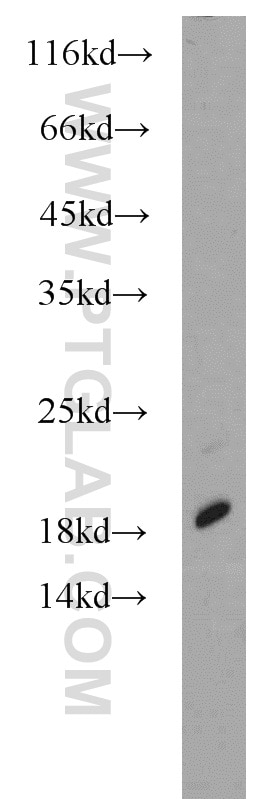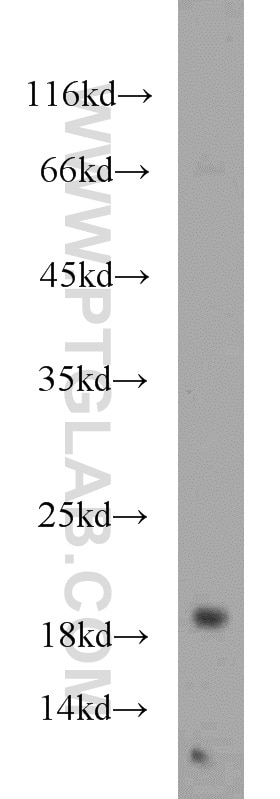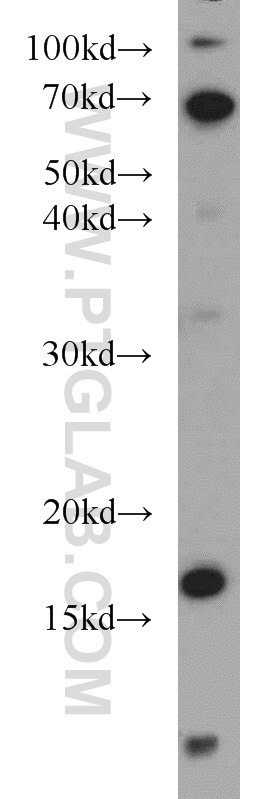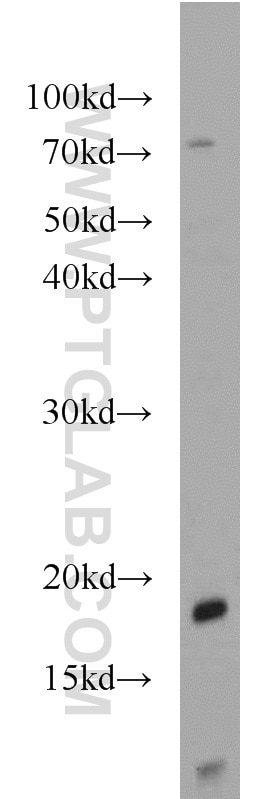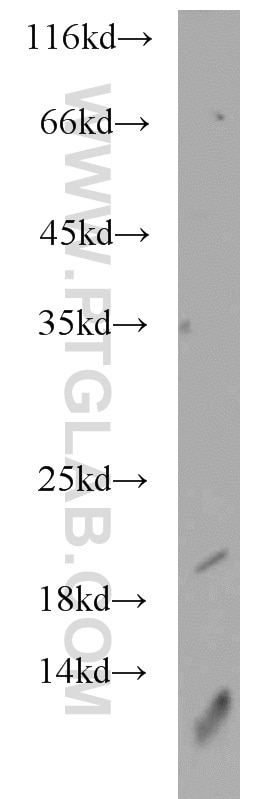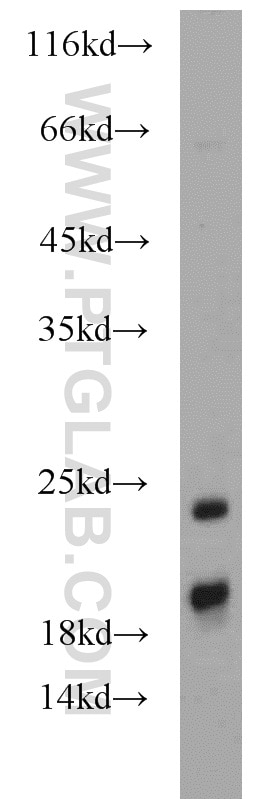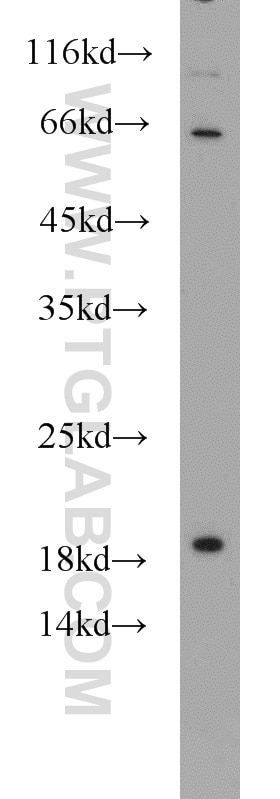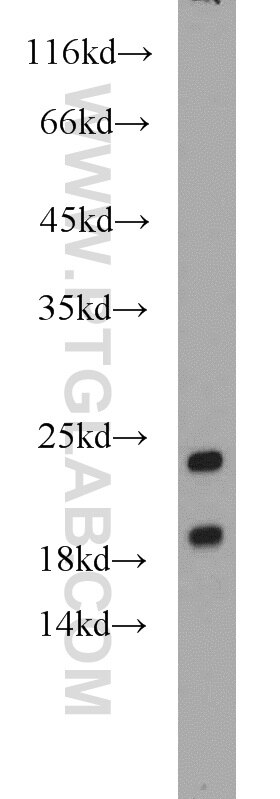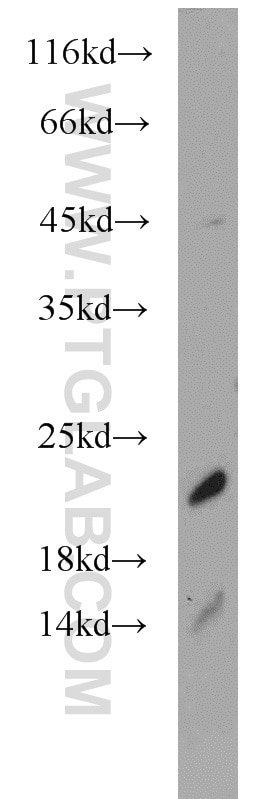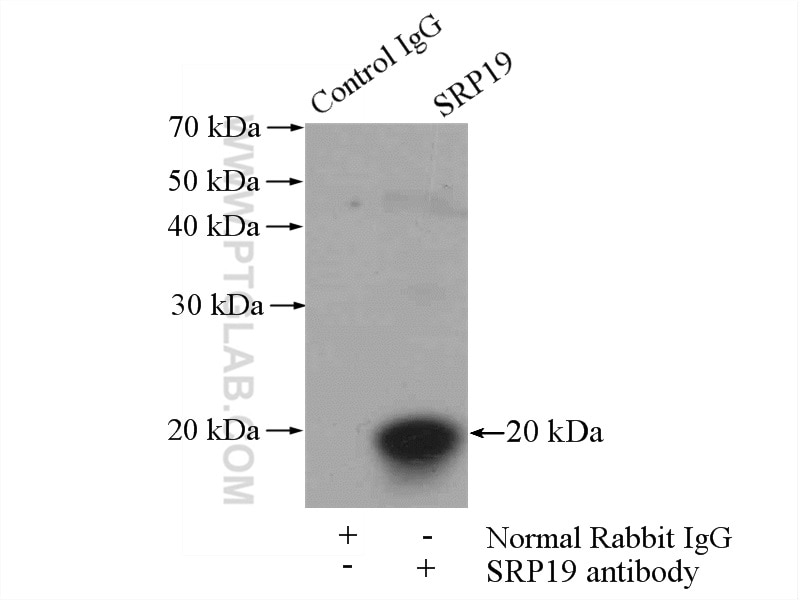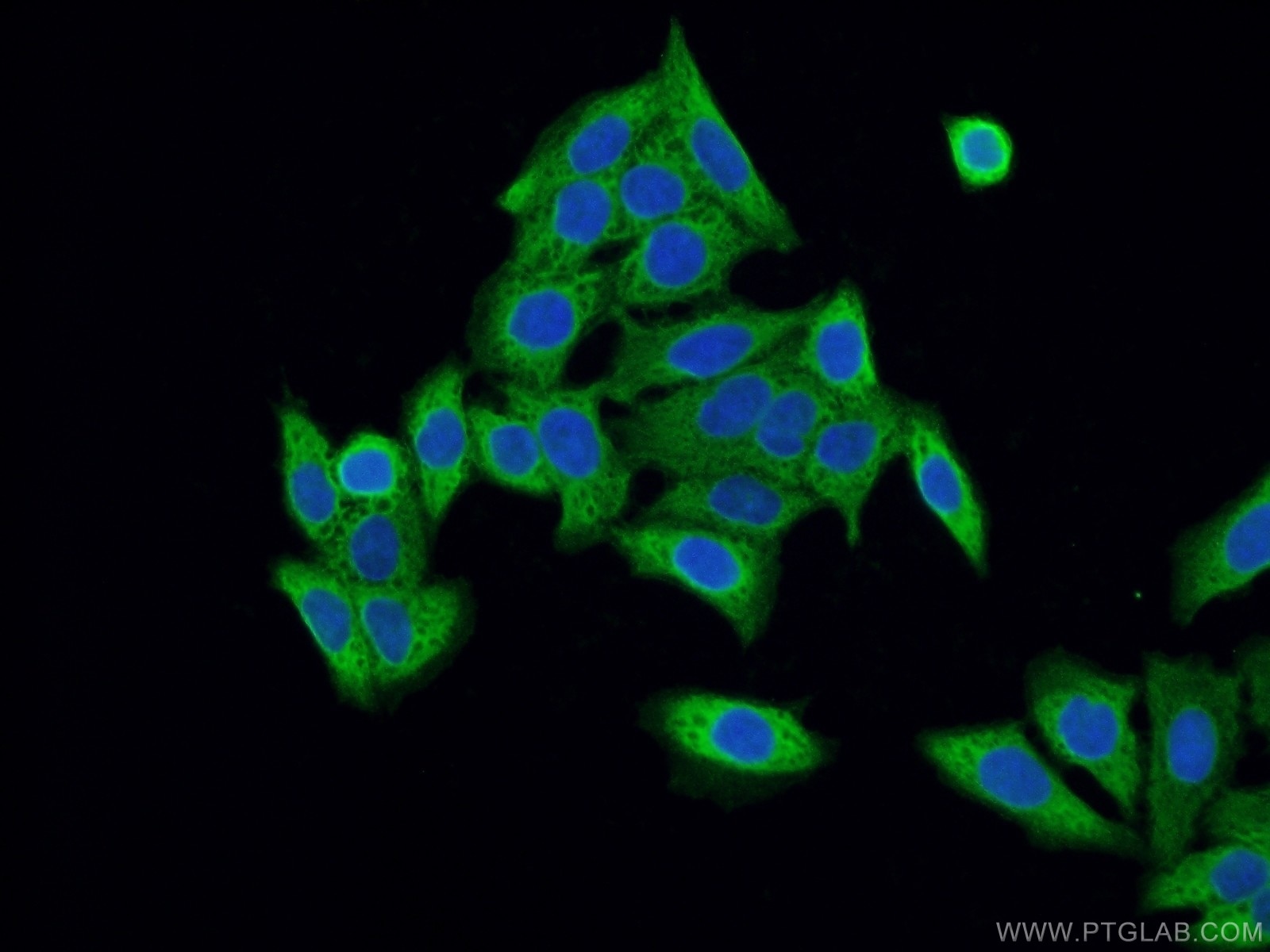Anticorps Polyclonal de lapin anti-SRP19
SRP19 Polyclonal Antibody for WB, IP, IF, ELISA
Hôte / Isotype
Lapin / IgG
Réactivité testée
Humain, rat, souris
Applications
WB, IF/ICC, IP, ELISA
Conjugaison
Non conjugué
N° de cat : 16033-1-AP
Synonymes
Galerie de données de validation
Applications testées
| Résultats positifs en WB | tissu hépatique humain, cellules A549, cellules HeLa, cellules K-562, cellules Raji, tissu hépatique de souris, tissu ovarien de souris, tissu rénal de souris |
| Résultats positifs en IP | tissu rénal de souris |
| Résultats positifs en IF/ICC | cellules HeLa |
Dilution recommandée
| Application | Dilution |
|---|---|
| Western Blot (WB) | WB : 1:500-1:2000 |
| Immunoprécipitation (IP) | IP : 0.5-4.0 ug for 1.0-3.0 mg of total protein lysate |
| Immunofluorescence (IF)/ICC | IF/ICC : 1:20-1:200 |
| It is recommended that this reagent should be titrated in each testing system to obtain optimal results. | |
| Sample-dependent, check data in validation data gallery | |
Applications publiées
| WB | See 4 publications below |
Informations sur le produit
16033-1-AP cible SRP19 dans les applications de WB, IF/ICC, IP, ELISA et montre une réactivité avec des échantillons Humain, rat, souris
| Réactivité | Humain, rat, souris |
| Réactivité citée | Humain |
| Hôte / Isotype | Lapin / IgG |
| Clonalité | Polyclonal |
| Type | Anticorps |
| Immunogène | SRP19 Protéine recombinante Ag8903 |
| Nom complet | signal recognition particle 19kDa |
| Masse moléculaire calculée | 144 aa, 16 kDa |
| Poids moléculaire observé | 18-25 kDa |
| Numéro d’acquisition GenBank | BC010947 |
| Symbole du gène | SRP19 |
| Identification du gène (NCBI) | 6728 |
| Conjugaison | Non conjugué |
| Forme | Liquide |
| Méthode de purification | Purification par affinité contre l'antigène |
| Tampon de stockage | PBS avec azoture de sodium à 0,02 % et glycérol à 50 % pH 7,3 |
| Conditions de stockage | Stocker à -20°C. Stable pendant un an après l'expédition. L'aliquotage n'est pas nécessaire pour le stockage à -20oC Les 20ul contiennent 0,1% de BSA. |
Informations générales
The signal recognition particle (SRP) is one of the few functional small RNP particles. The SRP couples the synthesis of membrane and secretory proteins across or into the endoplasmic reticulum (ER) membrane in eukaryotes, as well as across the bacterial plasma membrane, and chloroplast thylakoid membranes. The mammalian SRP is composed of a 7S (or 7SL) RNA and six different proteins, SRP9, SRP14, SRP19, SRP54, SRP68 and SRP72. All of the components of SRP, including SRP RNA, participate directly in the overall protein targeting process. SRP19 binds directly to 7S RNA and mediates binding of the 54 kDa subunit of the SRP. SRP19 was shown to significantly enhance SRP54 attachment to helix 8 of 7SL RNA. Binding of SRP19 leads to restructuring of both helix 6 and 8, causing local changes at the SRP54-binding site. This antibody is a rabbit polyclonal antibody raised against full length SRP19 of human origin.
Protocole
| Product Specific Protocols | |
|---|---|
| WB protocol for SRP19 antibody 16033-1-AP | Download protocol |
| IF protocol for SRP19 antibody 16033-1-AP | Download protocol |
| IP protocol for SRP19 antibody 16033-1-AP | Download protocol |
| Standard Protocols | |
|---|---|
| Click here to view our Standard Protocols |
Publications
| Species | Application | Title |
|---|---|---|
Nucleic Acids Res The pioneer round of translation ensures proper targeting of ER and mitochondrial proteins. | ||
Nucleic Acids Res SECIS-binding protein 2 interacts with the SMN complex and the methylosome for selenoprotein mRNP assembly and translation. | ||
PLoS One The CELF1 RNA-Binding Protein Regulates Decay of Signal Recognition Particle mRNAs and Limits Secretion in Mouse Myoblasts. | ||
Elife The unfolded protein response and endoplasmic reticulum protein targeting machineries converge on the stress sensor IRE1. |
